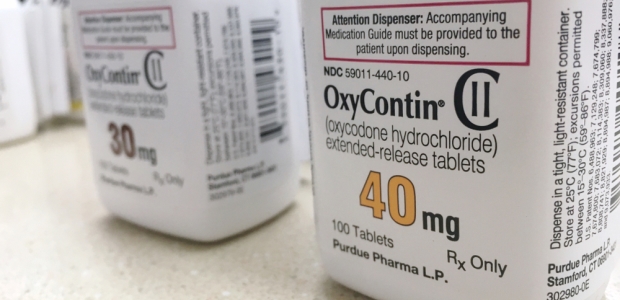
Ohio BWC Dropping Coverage of Oxycontin
The Ohio Bureau of Workers' Compensation will no longer pay for Oxycontin or generic sustained-release oxycodone tablets for workers who suffer on-the-job injuries on or after June 1, 2019. Injured workers who are currently on those medications will have until Dec. 31 to discontinue their use or switch to a different product on the state agency's formulary.
The Ohio Bureau of Workers' Compensation is phasing out coverage for Oxycontin and its generic form by the end of this year. The agency announced recently that, given their potential for abuse, misuse, addiction, and dependence, BWC will no longer pay for Oxycontin or generic sustained-release oxycodone tablets for workers who suffer on-the-job injuries on or after June 1, 2019.
Injured workers who are currently on those medications will have until Dec. 31 to discontinue their use or switch to a different product on the state agency's formulary.
"We are encouraging injured workers to discuss with their physicians other effective painkillers on our formulary and to explore non-medication treatment options for chronic pain," said BWC Administrator/CEO Stephanie McCloud. "Our priority remains the health and safety of our injured workers, which can be more challenging when an addiction enters the mix." She said workers who want to discontinue opioid use altogether should talk to their physician or BWC-contracted managed care organization. BWC will reimburse for certain services.
Ohio Gov. Mike DeWine praised the agency's new rule. "We want to prevent addiction, and I believe that this change will make an impact on Ohio's opioid epidemic by promoting the safest possible treatments for injured workers with painful conditions," he said.
The rule does not apply to immediate-release oxycodone, a medication used for acute pain. Approved by BWC's board of directors in February, the rule follows a study during the past year by BWC's pharmacy and therapeutics committee, which is comprised of physicians and pharmacists in the workers' compensation system.
On June 4, the U.S. Department of Labor announced an opioid-crisis Dislocated Worker Grant is being made to the Ohio Department of Job and Family Services for up to $11 million, with $3,666,667 released initially. The U.S. Department of Health and Human Services declared the opioid crisis a national public health emergency in October 2017, enabling Ohio to request this funding for a DWG project. The grant will provide disaster-relief jobs and employment services to eligible individuals in Ohio affected by widespread opioid use, addiction, and overdoses.
Funding will provide eligible participants disaster-relief employment in positions addressing the impacts of the opioid crisis, such as peer recovery coaches and social service aids assisting children placed in foster care resulting from parents' substance abuse. The project will also provide training and employment services to eligible participants impacted by the crisis and seeking careers in in-demand jobs related to addiction, treatment, prevention, and pain management. The state anticipates serving approximately 893 participants in Ohio.
"Opioid abuse devastates families and communities," Labor Secretary Alexander Acosta said. "Providing a support system to individuals to overcome their addiction and find family-sustaining job opportunities is a critical part of recovery. This Dislocated Worker Grant will help individuals impacted by the opioid crisis remain in and return to the workforce."